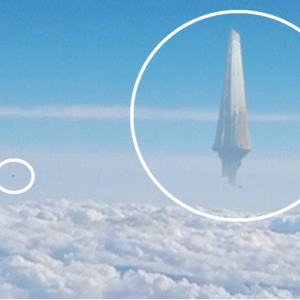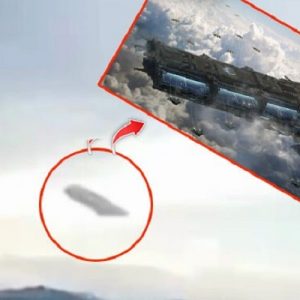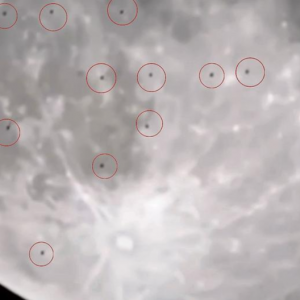Driving down an isolated forest road at midnight, your headlights catch something impossibly tall and winged standing in your path. You slam on the brakes, heart pounding, as two glowing red eyes stare back. This isn’t a scene from a horror film—it’s the legendary Mothman, one of America’s most enduring cryptid mysteries. In this article, we’ll explore the origins of the Mothman legend, dissect eyewitness accounts, examine possible explanations, and dive into the cultural impact of this eerie, winged creature.
The Birth of a Legend: Point Pleasant’s Unsettling Sightings
In November 1966, residents of Point Pleasant, West Virginia, began reporting a strange creature with glowing red eyes and massive wings. The first sighting occurred near an abandoned munitions plant called TNT area, where two young couples saw a man-like figure with a seven-foot wingspan and eyes that “glowed like bicycle reflectors.” Within days, dozens of witnesses—police officers, park workers, even a pair of gravediggers—described the same winged humanoid. The frenzy peaked when the Silver Bridge collapsed in December 1967, killing 46 people. Many locals came to believe Mothman was an omen of doom.
Anatomy of Fear: Describing the Winged Fiend
While descriptions vary, several key features define the classic Mothman:
- Human-Like Torso and Limbs: Witnesses describe a muscular body standing six to eight feet tall, with a vaguely human posture.
- Bat-Like Wings: A wingspan estimated between ten and twelve feet, leathery and powerful.
- Glowing Red Eyes: Bright, reflective eyes set against a dark, shadowy figure.
- Silent Flight: Reports emphasize a lack of flapping sound, as if Mothman glides effortlessly.
These unsettling traits combine the familiar with the alien, creating a creature that defies easy classification.

Folklore and Folly: Theories Behind the Mothman
Cryptid researchers and folklorists have proposed numerous explanations for the Mothman phenomenon:
- Misidentified Wildlife: Could the sightings be oversized birds—bats, owls, or sandhill cranes—illuminated by car headlights? While misidentifications happen, consistent human-like features challenge this theory.
- Mass Hysteria and Pareidolia: Psychological factors can lead groups to “see” the same thing, especially under stress. The eerie glow of eyes in darkness, however, remains difficult to dismiss.
- Supernatural Omen: In local lore, Mothman took on a prophetic role, warning of the Silver Bridge collapse. Similar to banshees or hobgoblins, he became a folkloric harbinger.
- Extraterrestrial Visitor: Some UFologists link Mothman to UFO reports in the same region and period. Could an alien reconnaissance craft have a winged pilot?
- Interdimensional Entity: Fringe theories suggest Mothman slips between realities, appearing only briefly when the veil thins.
Eyewitness Testimonies: Consistency and Contradictions
Despite the passage of decades, fresh Mothman sightings continue. Modern accounts—often from dashcams and night-vision devices—echo 1966 details: glowing eyes, silent gliding, a humanoid silhouette. Yet contradictions persist: sometimes the eyes appear yellow, the wingspan seems smaller, or the figure is spotted near urban areas. These discrepancies fuel both skepticism and fascination, as investigators weigh natural explanations against the uncanny.
Chasing Shadows: Scientific Investigations
While no “Mothman bones” have surfaced, serious efforts have been made to study the phenomenon:
- Night-Vision and Infrared Cameras: Teams deploy thermal sensors along rural roads, hoping to catch a heat signature. Thus far, results are inconclusive.
- Audio Recordings: Researchers listen for unusual wingbeats or unidentifiable calls. Again, animal sounds often muddy the data.
- Environmental Studies: Scientists note that many sightings cluster near abandoned industrial sites, where artificial lighting and structures create optical illusions.
Although no definitive proof exists, these investigations reflect a growing rigor in cryptid research.

Cultural Impact: Mothman in Media and Tourism
The legacy of Mothman extends far beyond West Virginia:
- “The Mothman Prophecies”: The 2002 film starring Richard Gere dramatizes paranormal investigator John Keel’s descent into conspiracy, cementing Mothman’s place in pop culture.
- Annual Mothman Festival: Each September, Point Pleasant hosts fans, vendors, and researchers, celebrating the legend with keynote lectures, costume contests, and bridge tours.
- Merchandise and Art: T-shirts, sculptures, and craft beers bear Mothman’s distinctive image, testifying to his commercial draw.
- Literature and Podcasts: Countless books and audio shows revisit the sightings, theories, and lingering mysteries.
Protecting Yourself During ‘Mothman Season’
If you find yourself driving down a lonely road at dusk, heed these tips:
- Keep Headlights Steady: Sudden bright lights can startle wildlife into hyper realism.
- Don’t Chase: Pursuing a cryptid can lead you off the road—literally and metaphorically.
- Document Details: Note time, location, weather, and behavior. Photos and videos can aid later analysis.
- Stay Calm: Most Mothman sightings likely stem from natural phenomena; panic only feeds the legend.
Conclusion: The Winged Enigma Lingers
More than half a century after those first Point Pleasant reports, Mothman remains a potent symbol of the unknown—part folklore, part psychological puzzle. Whether a misidentified bird, a collective hallucination, or something truly unearthly, the winged figure reminds us that even in our age of science, the night still holds mysteries. The legend of Mothman persists because it taps into deep-seated fears and hopes: that we’re not alone, and that sometimes, the greatest discoveries await just beyond the edge of our headlights.





